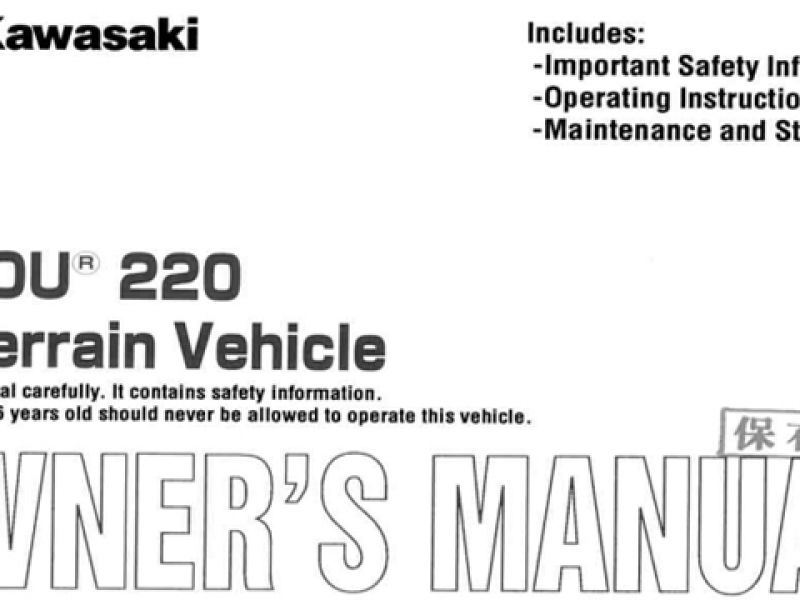
Your satisfaction is important to your authorized Kawasaki dealer and to Kawasaki Motors Corp., U.S.A. If you have a problem concerning warranty or service, please take the following action: Contact the owner and/or service manager of your authorized Kawasaki dealer. Fully explain your problem and ask for assistance in resolving the situation. The OWNER of the dealership is concerned with your satisfaction and your future business. For this reason the owner is in the best position to assist you. Also, all warranty and service matters are handled and resolved through the authorized Kawasaki dealer network.
If you are unsatisfied after working with your Kawasaki dealer and feel you still require further assistance, write to the address below. Please be certain to provide the model, product identification number, mileage or hours of use, accessories, dates that events occurred and what action has been taken by both you and your dealer. Include the name and address of the dealership. To assist us in resolving your inquiry, please include copies of related receipts and any other pertinent information including the names of the de
Kawasaki Bayou 220 PDF Manual
The fuel tank vent hose must be routed as shown. The engine may stall or lose power if the fuel tank vent is plugged or if the vent hose is pinched. Inspect the vent hose before riding and whenever the engine seems to lose power. If the fuel tank is full but the engine feels as if it is running out of fuel, check the vent and vent hose.
Payload and Tire Pressure
Failure to maintain proper inflation pressures or observe payload limits for your tires may adversely affect handling and performance of your vehicle and can result in loss of control. The maximum recommended load carrying capacity of this vehicle is 130 kg (285 lb). Use the tire pressure gauge in the tool kit to accurately set tire pressure.
Kawasaki Bayou 220 User's Manual
Choose a location to enter and exit the water where the banks are not too steep or slippery. Check the water before entering for rocks, holes or other obstacles which may cause you to overturn or become stuck or submerged. Observe the following rules for operating the vehicle in water: Never operate the vehicle in rivers or streams where the water is flowing quickly. Such operation could lead to an accident if the vehicle loses traction and is swept into the current.
Use caution and maintain low speeds to avoid uncontrolled skidding on areas covered with clay, mud, ice, or snow. These conditions are particularly hazardous when descending a hill or making a turn. Remember that this vehicle is not allowed on public streets, roads, or highways.
Kawasaki Bayou 220 Manual PDF
On slippery or loose surfaces, special care is required. Sliding may be hazardous because the wheels may suddenly regain traction and cause the vehicle to tip or overturn and have an accident. Therefore, never ride "over your head" when you are unprepared for the riding surface. Often you can correct a skid by turning the wheels in the direction of the skid and placing additional body weight on the front wheels. Do not apply heavy braking force or accelerate when skidding, since this may cause you to lose control altogether. Learn to safely control skidding or sliding by practicing at low speeds and on level,smooth terrain.
Normally you should descend straight down a hill, since riding at an angle could cause the vehicle to lean to one side and possibly tip over. Shift into a low gear before beginning your descent. Sit back on the seat and brace yourself by straightening your arms. Hold your speed down by keeping the throttle closed. Apply the brakes as necessary. Avoid excessive use of the front brake it could cause the vehicle to overturn. Be careful if the surface is loose the tires may skid and braking effectiveness will be reduced.